Ribeye Roast vs Prime Rib – Whether you are going to your local grocery stores or a local butcher shop, you will notice that there are so many different names for the various beef cuts! This can get confusing quick, so we are here to breakdown all the different names related to a ribeye roast or prime rib cut of meat.
We will keep it simple, review the differences, and review the best ways to cook them resulting in a perfectly juicy and tender slice of meat. Perfect for any of your upcoming special occasions!
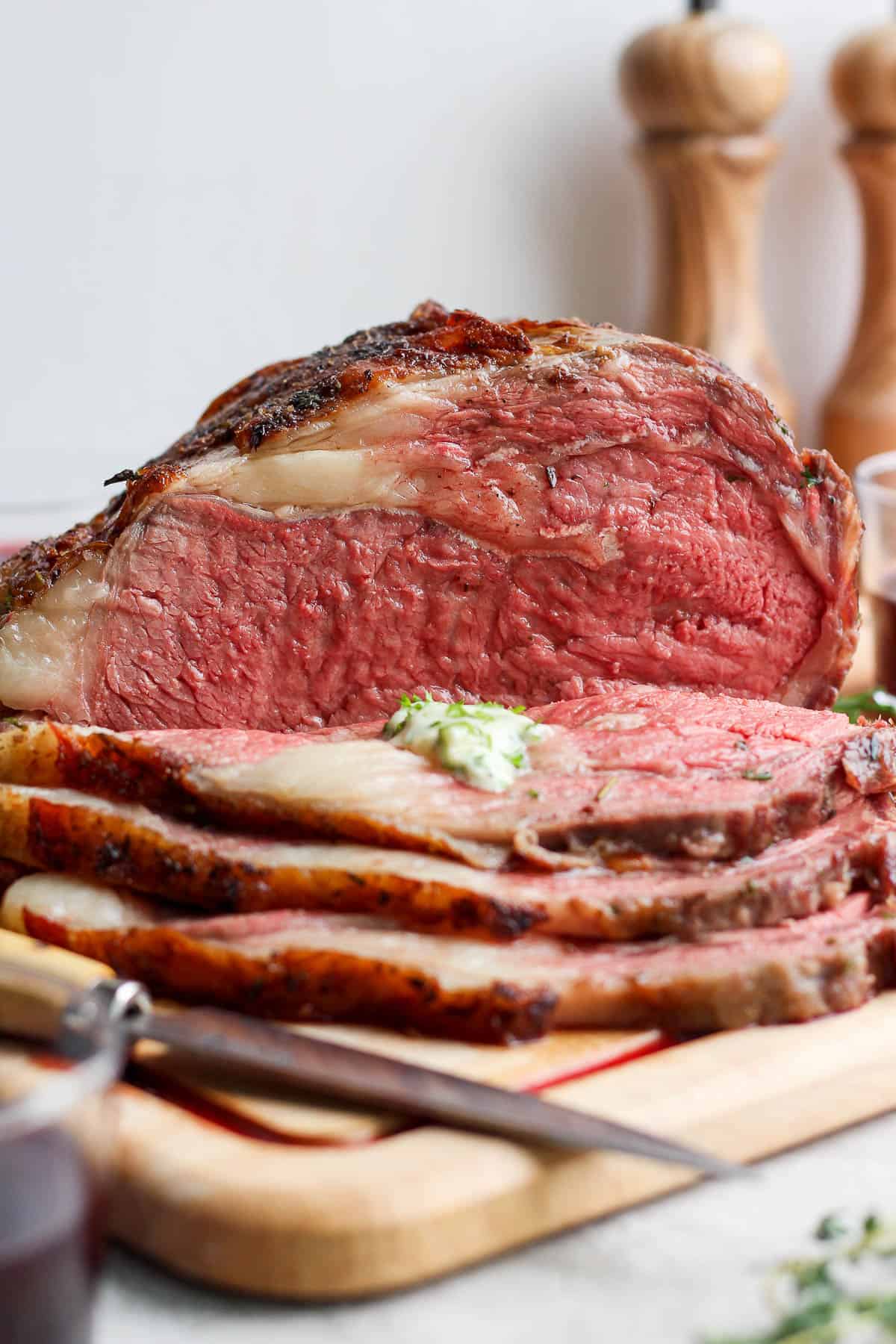
What Is The Difference Between A Ribeye Roast & Prime Rib
So what is the big difference between these two steak cut options? Alright, prime rib and ribeye roast are essentially the same primal cut of beef. The main difference between these cuts of beef are that you will typically find prime rib cooked with the bone-in (also called a bone-in ribeye) and a boneless version of prime rib will be labeled as a ribeye roast. You may also see these labeled as a standing rib roast, boneless prime rib, or boneless rib roast.
Prime Rib
This cut of meat does come from the same area of the animal that the ribeye roast does, the primal rib section. And although the word “prime” is in its name, that does not guarantee that it is USDA Prime Beef. You will need to confirm the USDA prime grade on the beef before buying, if that is something that matters to you.
Due to a substantial about of fat marbling in this large cut of beef you will find that there will be a lot of drippings when cooking. We highly recommend using these drippings to make a prime rib au jus, perfect for dipping!
Ribeye Roast
These roasts also come from the rib bones part of the cow and can have a variety of different names (i.e. rib eye, rib steak, etc.) but as long as it has “ribeye” as part of the name it generally refers to the same cut. If you are looking for a ribeye steak, they are cut from a ribeye roast before it is cooked. Where as a prime rib cut would be a much larger cut since it typically includes the bone.
When you do find a nice ribeye roast it will have a rib cap, also called the Spinalis Dorsi. This is a very delicate piece of the meat and full of so much amazing flavor! It is, by far, the best part!
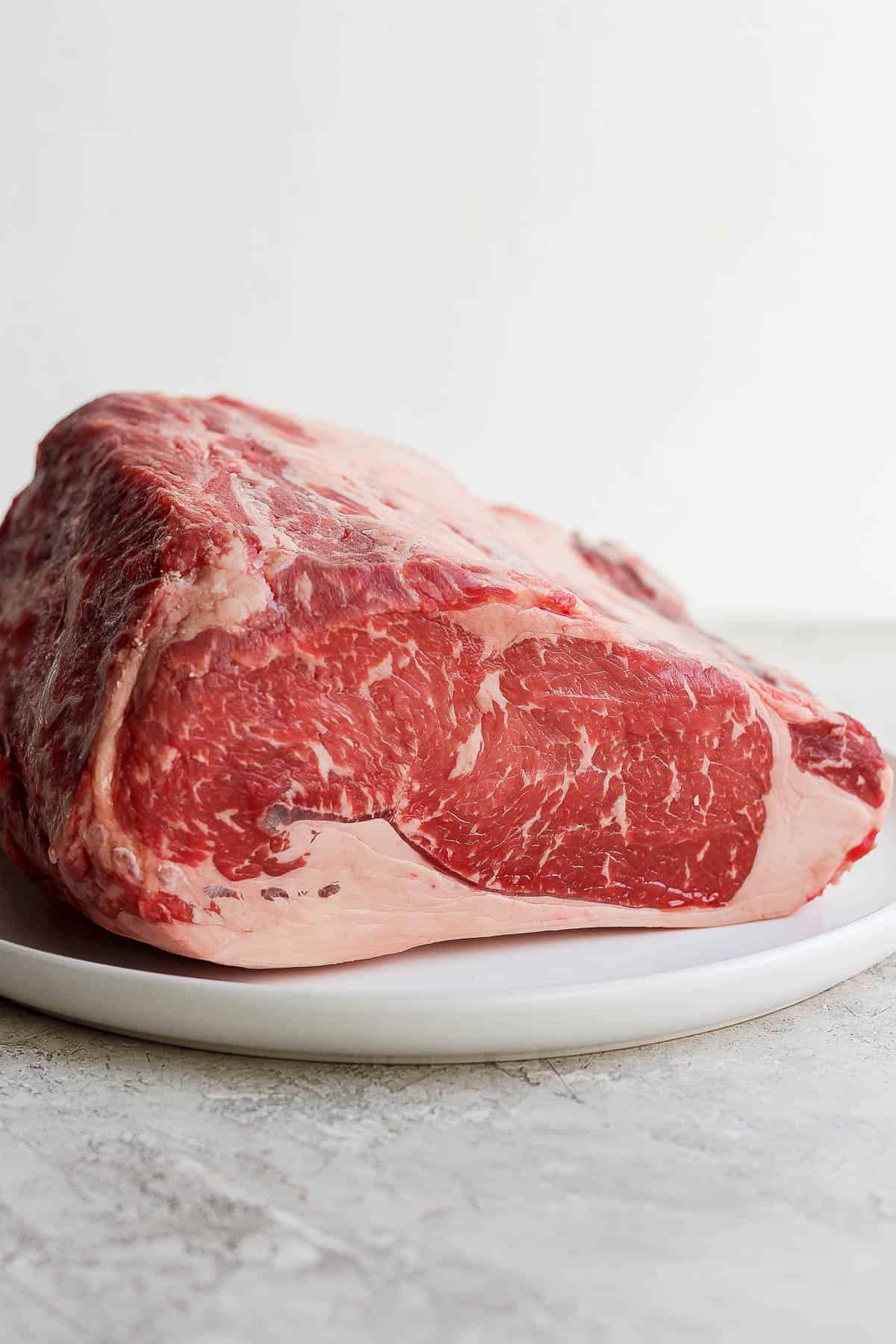
Cooking Techniques
Now that we have reviewed the different ways you might find these cuts of meat, let’s discuss the best cooking method for preparing them. We have prepared a bone-in roast and boneless roast, both options have turned out amazing. So it is up to you which one you want to choose. These cooking techniques will work for either.
- Oven Prime Rib (aka Standing Rib Roast):
- seasoning – after purchasing your large cut of beef you will want to pat it dry with clean paper towels before seasoning. You can either keep the seasoning simple with kosher salt and ground black pepper or use a prime rib seasoning. After you coat it with your desired seasoning you can let it sit in the roasting pan for about 2 hours so that it comes up to room temperature.
- cooking – Preheat your oven temperature to a high heat (500 degrees F), place your roast in at this temp, uncovered, for about 20 minutes. Then drop to a low temperature (325 degrees F) for the rest of the cook time. We recommend cooking for about 15 minutes per pound or until the internal temperature reaches your desired level (use a meat thermometer). (a medium-rare finish is ideal at 130-135 degrees F. which we will get to with the resting time)
- medium-rare cook time chart –
- 6 pounds (bone-in): 20 minutes at 500 degrees F; 70 minutes at 325 degrees F.
- 7 pounds (bone-in): 20 minutes at 500 degrees F; 85 minutes at 325 degrees F.
- 8 pounds (bone-in): 20 minutes at 500 degrees F; 100 minutes at 325 degrees F.
- Smoked Prime Rib:
- seasoning – begin by patting it dry with clean paper towels. You can either keep the seasoning simple with kosher salt and ground black pepper or use a prime rib seasoning. After you coat it with your desired seasoning, then mix up an herbed butter and rub this over the entire rib roast.
- smoking – place the prime rib with the fat cap (large chunk of fat typically found on one side of your prime rib) on the top on your smoker (we love our Traeger Pro Series Pellet Grill) at 225 degrees F. Insert the temperature probe into the thickest part of the roast and let it smoke (without lifting the lid!) until the internal temperature reaches 118-120 degrees F. (for a medium-rare finish – a medium-rare finish is actually 130-135 degrees F. which we will get to in the next step with the sear + resting time) – this can take anywhere from 2 hours 45 minutes to 4 hours (or 35-40 minutes per pound).
- sear (or reverse sear) – once you have removed the roast from the smoker you can bring a large cast iron skillet to a high heat, add about 2-3 tablespoons of the rendered fat from the baking sheet the roast is on, and sear for about 2-3 minutes and baste with the rendered fat or butter.
Rest Time – no matter which way you decide to cook your roast, the most important part comes at the end…. the rest time! This is an essential step! Once your roast reaches your desired internal temperature, you will want to let it rest for about 15-20 minutes before making your first cut. This allows all of the juices to redistribute and result in the most tender slice of beef you can imagine!
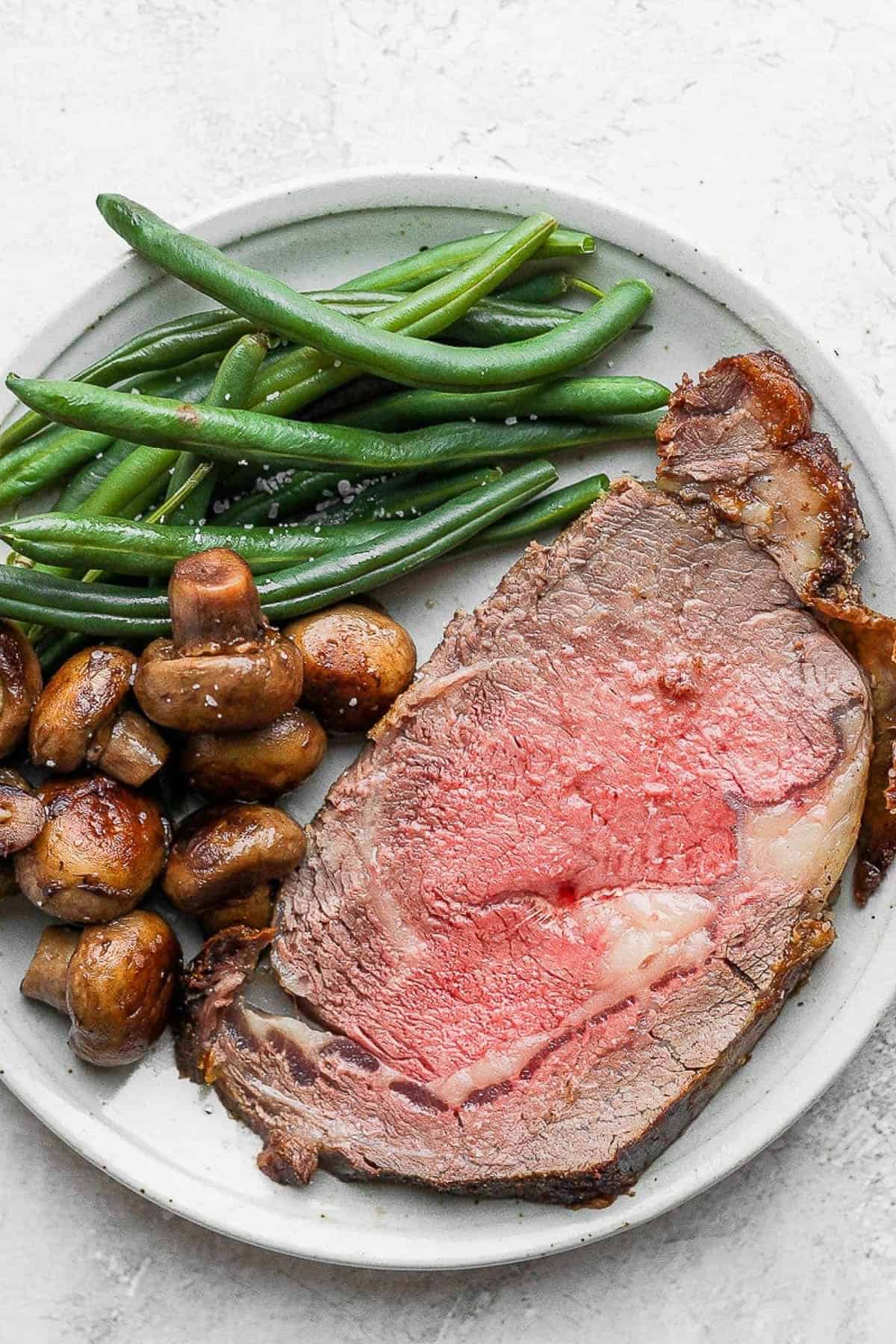
Serving Suggestions For A Ribeye Roast Or Prime Rib
A slice of this perfectly cooked beef is honestly amazing all on its own, but your guests would probably like some options for ways to eat it and side dishes. We love to serve it with a flavorful beef au jus made from the pan juices or a horseradish sauce for prime rib! And if you are looking for side dishes, we have a list of 15+ prime rib side dishes to choose from. There is something on there for everyone!
Have any leftovers? You have to make this Leftover Prime Rib Sandwich! We love buying a roast that is larger than needed just to make sure we have enough for leftovers!
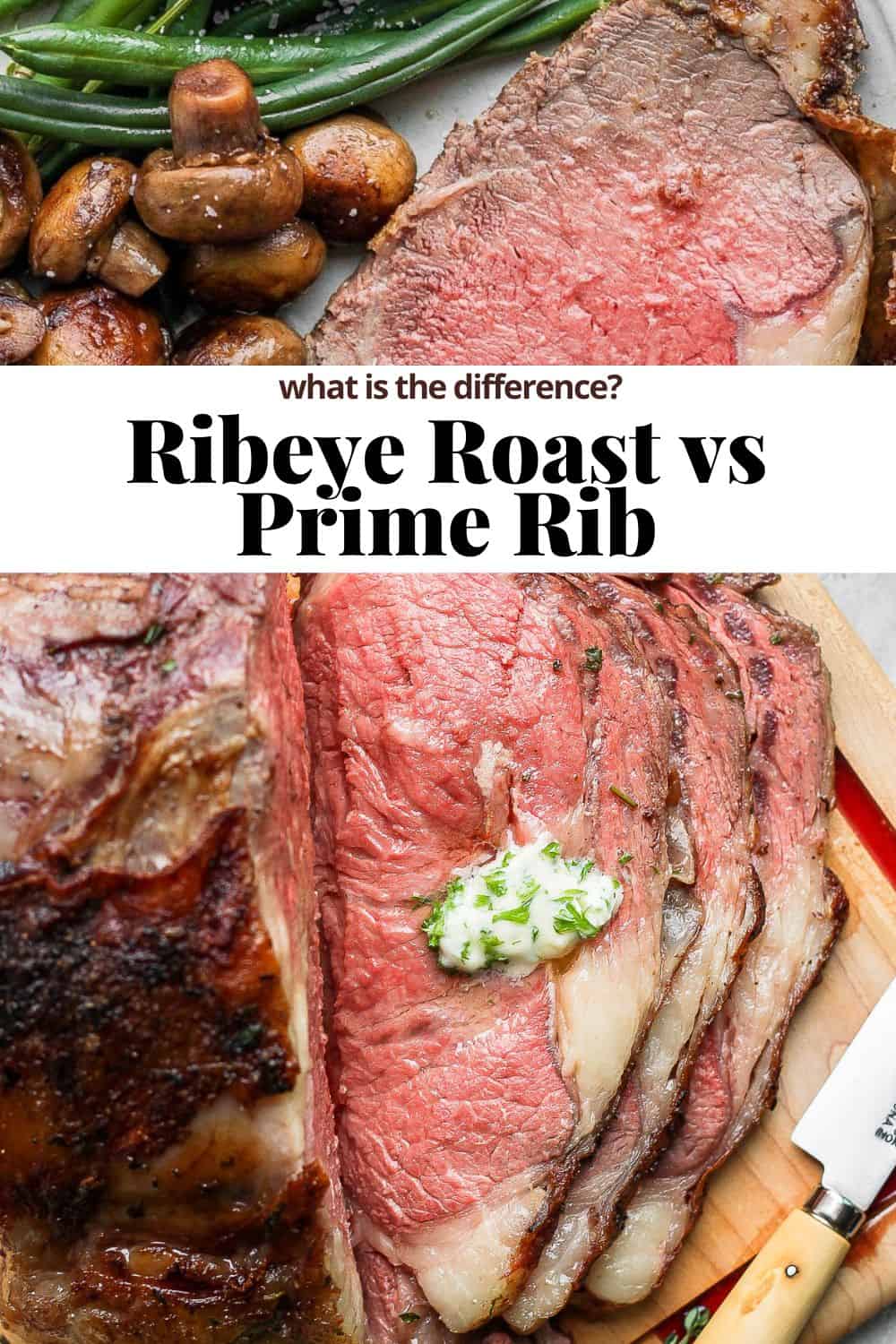

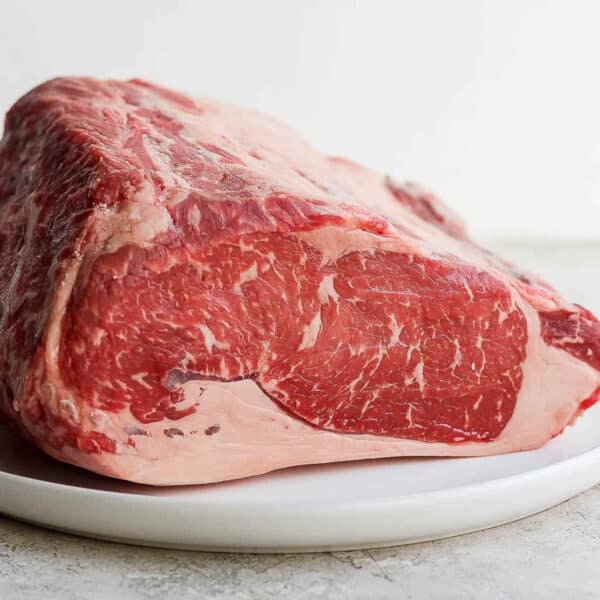

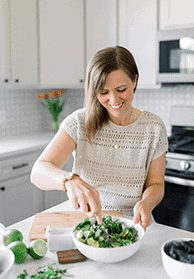





Tanja says
I prefer mine cooked at 500 for 20 min then 250 for a few hours. Let it rest loosely covered and serve. Medium rare tastes best.